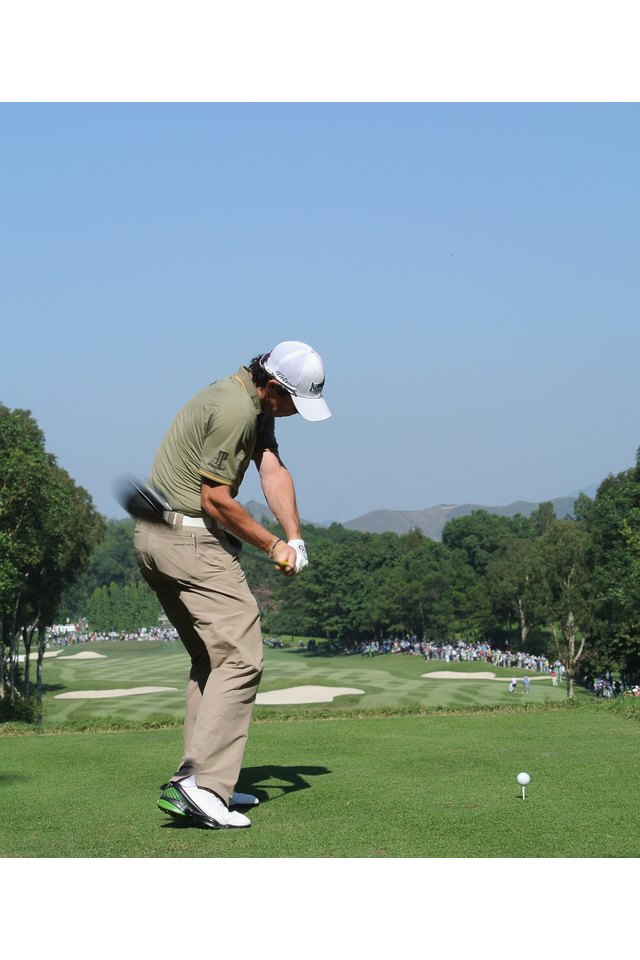How to Keep the Wrists on a Golf Downswing

All of your major joints have roles to play in your golf swing, including your wrists. Indeed, your wrist positioning on the downswing is a key to generating power. If you don’t believe that, take a full swing off a practice tee without hinging your wrists and see how far the ball travels -- or doesn’t travel. Setting your wrists in the correct position at the top of your backswing is a key to maintaining the correct position in the downswing.
Hinge your wrists as far as possible at the top of your backswing. The wrist hinge should form an angle of about 90 degrees between your left forearm and the club’s shaft.
Allow your hands to drop as you begin the downswing, without unhinging your wrists. Although gravity and the force of your swing will naturally pull the clubhead down a bit, at the midway point of your downswing the angle of your left forearm and the club shaft should remain close to 90 degrees.
Gary Player said he added about 30 yards of distance early in his PGA Tour career in part by delaying the uncocking of his wrists during the downswing. Player said shifting his weight forward immediately upon starting the downswing automatically kept his wrists cocked longer, adding distance to his drives.
Unhinge your wrists naturally by extending your arms as you pass the midpoint of your downswing, but don’t try to twist your wrists to square the clubhead.
Keep the left wrist flat on impact. For a right-handed player, the left wrist’s position at impact is the best indicator of your clubhead’s position, so if your left wrist is flat your clubface should be square to the target. A flat left wrist also indicates that your left arm is fully extended, as it should be. The right wrist should be slightly concave at impact, angled away from the target.
Tips
To determine your proper wrist position at the beginning of your downswing, former LPGA standout Patty Berg advises golfers to take a club and assume the address position. Without moving the rest of your arms, bend your wrists upward as much as possible, lifting the clubhead vertically. Swing your arms back and up as you would during a backswing, without changing your wrist position. Observe your wrists and hands and try to copy this position at the top of your backswing.
All-time golf great Ben Hogan believed that the lead wrist’s position at impact provided a key distinction between stronger and poorer players. Hogan said the left wrist should be slightly forward of the hand at impact. Poor players, he said, tried to snap their wrists at impact to square the clubface. Ideally, a straight line drawn from the left wrist through any of the left hand’s knuckles should point away from the target slightly.
References
- What’s a Golfer to Do?; Ron Kaspriske and the Editors of Golf Digest
- Golf Digest: Make Hogan’s Magic Work for You
Writer Bio
M.L. Rose has worked as a print and online journalist for more than 20 years. He has contributed to a variety of national and local publications, specializing in sports writing. Rose holds a B.A. in communications.
